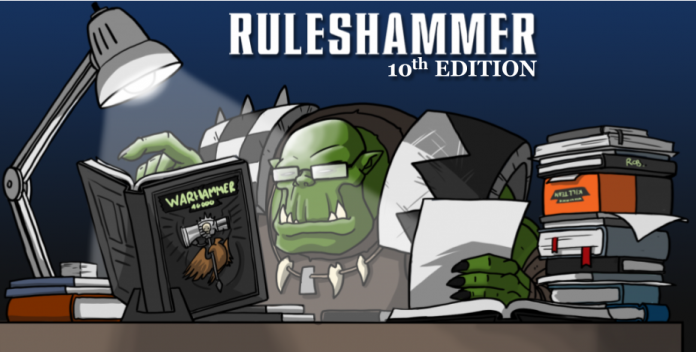In Ruleshammer we explore rules topics and issues in Warhammer 40,000, and our rules provide answers to some of the game’s most difficult questions. Today we’re joined by Stat Check’s Jeremy Atkinson, who also serves as a judge at GW US Open events. While Ruleshammer rulings are not official, we do believe they represent the best interpretation of the rules available to players.
Jeremy: I would like to be explicit here – I do help judge the US Open events, but these are not official answers from Games Workshop. If you want an official answer for the Games Workshop Open event series, please reach out to the events team at useventslistsubmission@gwplc.com.
The Tenth Edition version of Codex: Chaos Space Marines is out (find our review round-up here) and with it have come a host of new rules questions and queries. So today we’re diving into some of the most challenging new quandaries from the book.

Q. Deceptors Detachment: How Much “Memory” does the Soul Link Enhancement Have?
Something that came to our attention from Goonhammer Patron Esser-Z in our Discord: Can a unit using the Soul Link Enhancement to copy a Chaos Lord’s Chance for Glory ability use that ability multiple times per game? What if it copies that named ability from two different Chaos Lords?
Jeremy: Had to start with a Soul Link question, didn’t you? Sigh. Silliest 5 point enhancement I’ve ever seen…
Alright, let’s break down how I think this works. Chance for Glory: Once per battle… this model can use this ability. Since it’s the same-named ability, inheriting it multiple times wouldn’t allow you to use it multiple times. This is the same interaction that prevents you from using the “Lord of Chaos” datasheet ability multiple times a phase with different types of Chaos Lords.

Q: How do you determine if something “was eligible” to fight in the Fight phase?
Warp Talons’ new Warp Strike ability says that “At the end of the Fight phase, if this unit was eligible to fight this phase and is not within Engagement Range of one or more enemy units, you can remove this unit from the battlefield and place it into Strategic Reserves.” The easy scenario here is “I killed the unit I fought,” but in what other circumstances can I use this? Specifically, if my unit of Warp Talons didn’t charge, but they were within Engagement Range of an enemy unit at the start of the Fight phase and I activated another unit before them and killed the unit they were in range of, do they count as having been eligible? If, at any point, they were eligible to fight, does it trigger the ability, or do they need to fight to count as having been eligible?
Jeremy: Thankfully this one we can look at the core rules for the Battle Round and we see there that a unit is eligible to fight:
- If it is within Engagement Range of one or more enemy units.
- It made a Charge move this turn.
Based on this, I’d say if at any point in the fight phase if it meets either criteria at any point, it would have been considered eligible to fight and so can be removed from the battlefield. It’s definitely a rather odd edge case where you may be eligible to fight (due to a unit piling/consolidating into your unit then being wiped by a different unit. You were eligible to fight at some point, but you were never selected to fight as when it came time for them to fight they were no longer eligible.
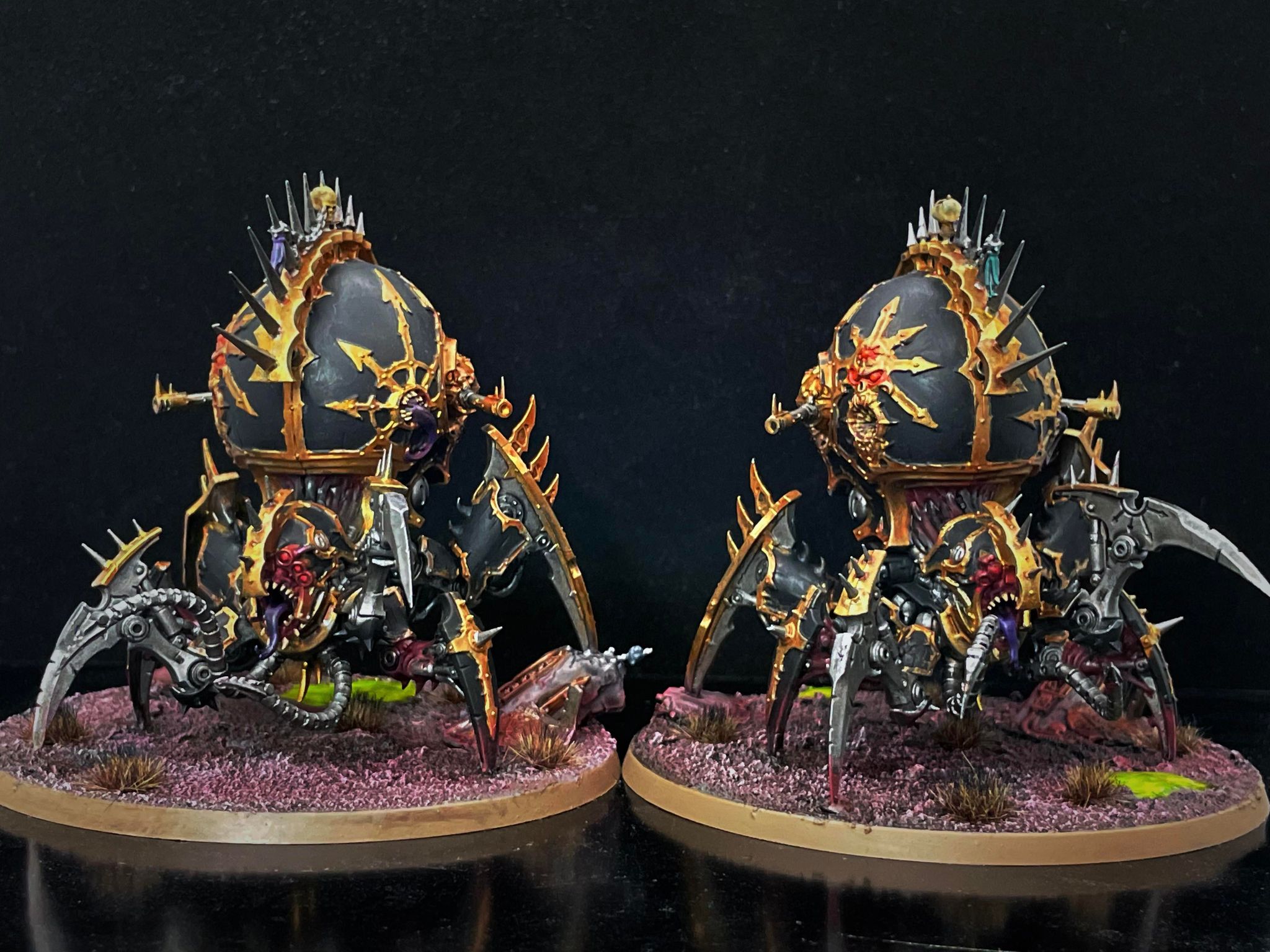
Q. Soulforged Warpack: Distance Moved with Predatory Pursuit
The Predatory Pursuit Stratagem says that “your unit can make a Normal move of up to 6”, but most end that move as close as possible to that enemy unit.” Does this mean that I always have to move the maximum possible distance, or can I opt to only go say, 4″, but that 4″ has to be as close as 4″ could take me?
Jeremy: I’d tentatively say “no,” as this has a similar wording to surge moves (i.e. Khorne Berzerker’s Blood Surge), which have been fairly consistently ruled as you have the choice to make the move, but if you do you have to use the full movement amount while finishing as close as possible to the nearest unit. The one difference here is that this is explicitly a Normal Move and so follows all of those restrictions (mainly not moving within or finishing the move within engagement range of enemy units).
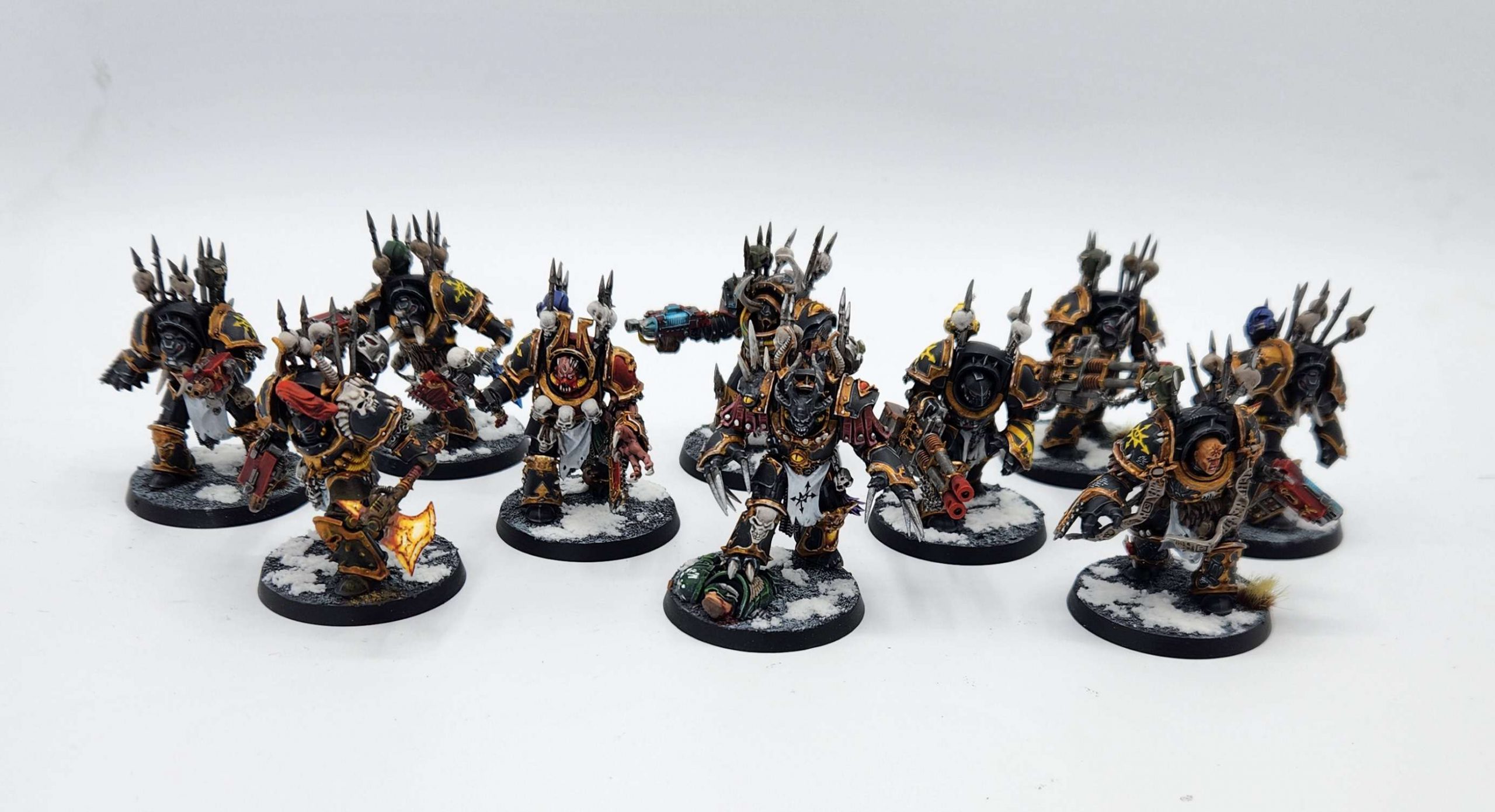
Q: Veterans of the Long War: Devastating Wounds with Black Crusade
The Black Crusade Stratagem says “bolt pistols, boltguns, and combi-bolters equipped by models in your unit have the [DEVASTATING WOUNDS] ability while your unit has not already inflicted 6 wounds this turn using that ability.” Two questions here:
- Does “inflicted” include wounds ignored by Feel No Pain?
- What’s the timing like on how wounds are inflicted? Specifically, if I put 30 bolter shots into a target and inflict 7 Devastating Wounds, does my opponent only resolve 6, or do they have to resolve all 7 before the effect goes away?
Jeremy: It can inflict a maximum of 6 devastating wounds, which then in turn be allocated to models. If they have “feel no pain” abilities, this could reduce it. One thing to note here is that technically you can’t fast roll this – as the different attacks could have different abilities, which is one of the requirements for fast rolling. That being said, you could fast roll into a single target and the first 6 critical wounds would then inflict devastating wounds, with any further criticals not doing anything other than a normal wound.

Q: Veterans of the Long War: Eager for Vengeance
The Enhancement Eager for Vengeance says that “The bearer’s unit is eligible to shoot and declare a charge in a turn in which it Fell back. While doing so, each time a model in that unit makes an attack that targets your focus of hatred…”
The question here is: What does “while doing so” mean, exactly?
Is that:
- When I fall back and then shoot/charge in the same turn, or
- Any time I shoot or charge
- Any time I make any attack (including melee), or charge
- Any time I make any attack in a turn in which I fell back
Additionally, this Enhancement also gives the unit +1 to its charge rolls, but this seems like a separate clause – do I get that ability if I didn’t fall back??
Jeremy: “While doing so…” is definitely in need of an errata or FAQ to tidy it up for clarity. My interpretation is that you always get the bonuses prescribed in there against your Focus of Hatred, since it can be read either way and reading it another way makes it considerably more limited.

Q. Dark Pacts When Fighting on Death
Can I use Dark Pacts when a model fights on death, e.g. when using the Eternal Hate Stratagem?
Rob: No. Dark Pacts are used when a unit is selected to shoot or fight, and when you fight on death a destroyed model is fighting – the trigger needed to make a Dark Pact doesn’t happen.
Jeremy: correct – and for the same reason when Fighting on Death the targeted units cannot use any reactive stratagems that include the wording “when selected as a target of an attack by an enemy unit” since the enemy unit isn’t selecting targets.
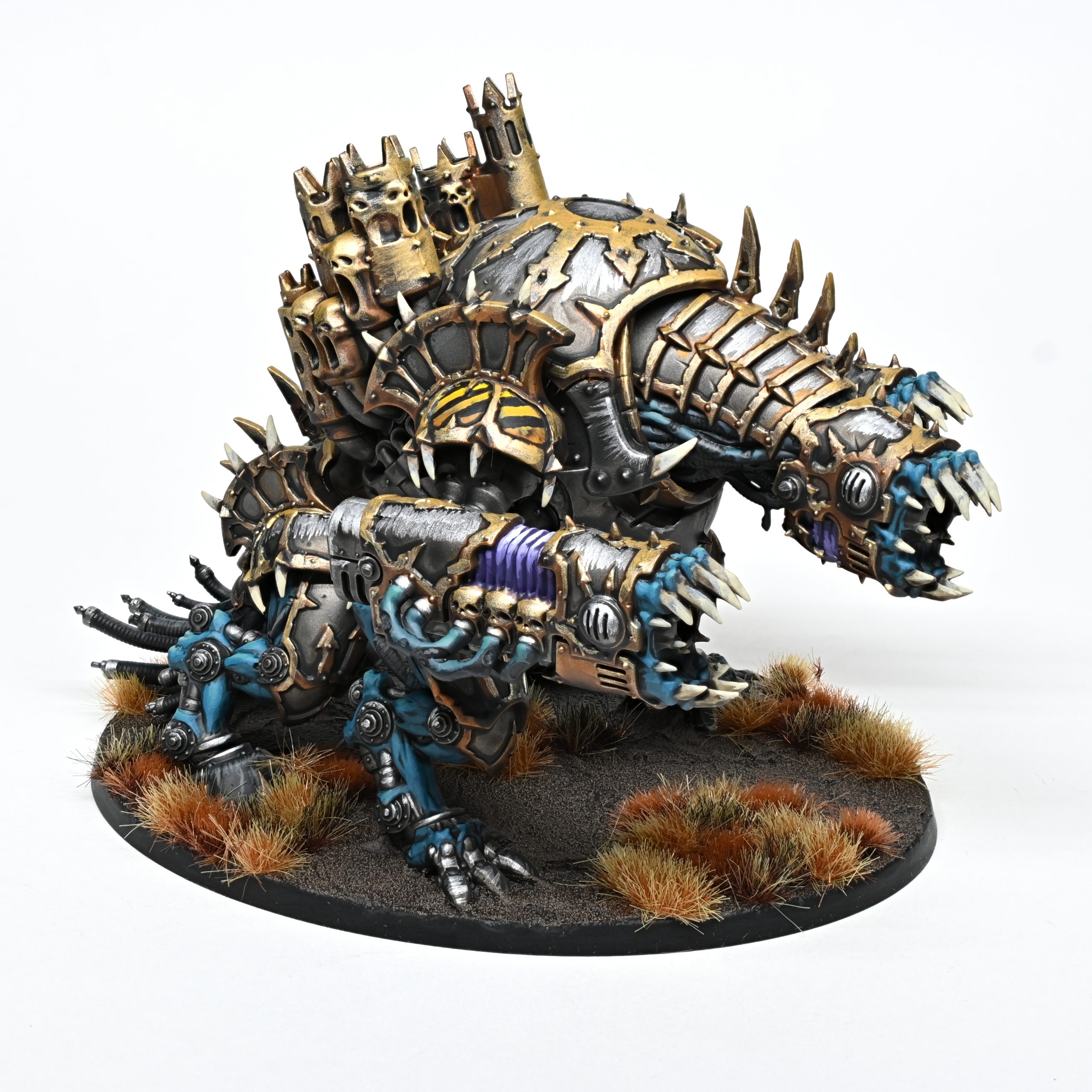
Q. Dark Pacts and Overwatch
Can I use a Dark Pact when firing Overwatch? Do I get the benefit of Marks of Chaos in Pactbound Zealots when firing Overwatch? If so, what happens if I roll a 5 to hit?
Rob: Yes. Selecting a unit to shoot is part of Firing Overwatch, and so when you select a unit you can opt to make a Dark Pact. Note that the wording on Marks of Chaos in Pactbound Zealots is different from the wording in the Index Detachment, Slaves to Darkness: While Marks only triggered critical hits on a roll of 5+ in the Shooting or Fight phases for Slaves to Darkness, they now trigger any time a unit gains a weapon ability as the result of a Dark Pact and doesn’t fail the resulting Leadership test. So you will get your Nurgle/Tzeentch/Undivided bonuses when Firing Overwatch (note that the Undivided benefit worked previously).
As for what happens when you actually fire Overwatch, well don’t get your hopes up – the Fire Overwatch Stratagem specifically states that when resolving attacks using the Stratagem, Critical Hits are only ever scored on unmodified Hit rolls of 6, so your rolls of 5 will never be Critical Hits, and won’t generate additional hits or lethal effects. So you can activate these abilities now, but they won’t do anything outside of re-rolling 1s to hit with the Mark of Chaos Undivided.
Other effects like the Profane Zeal Stratagem are locked to the Shooting or Fight phase and so can’t be applied here.
Jeremy: Nail, head. This is also quite clear, though the rules for it are in a spot you wouldn’t think to look for the effect of improved Critical Hits on Overwatch.
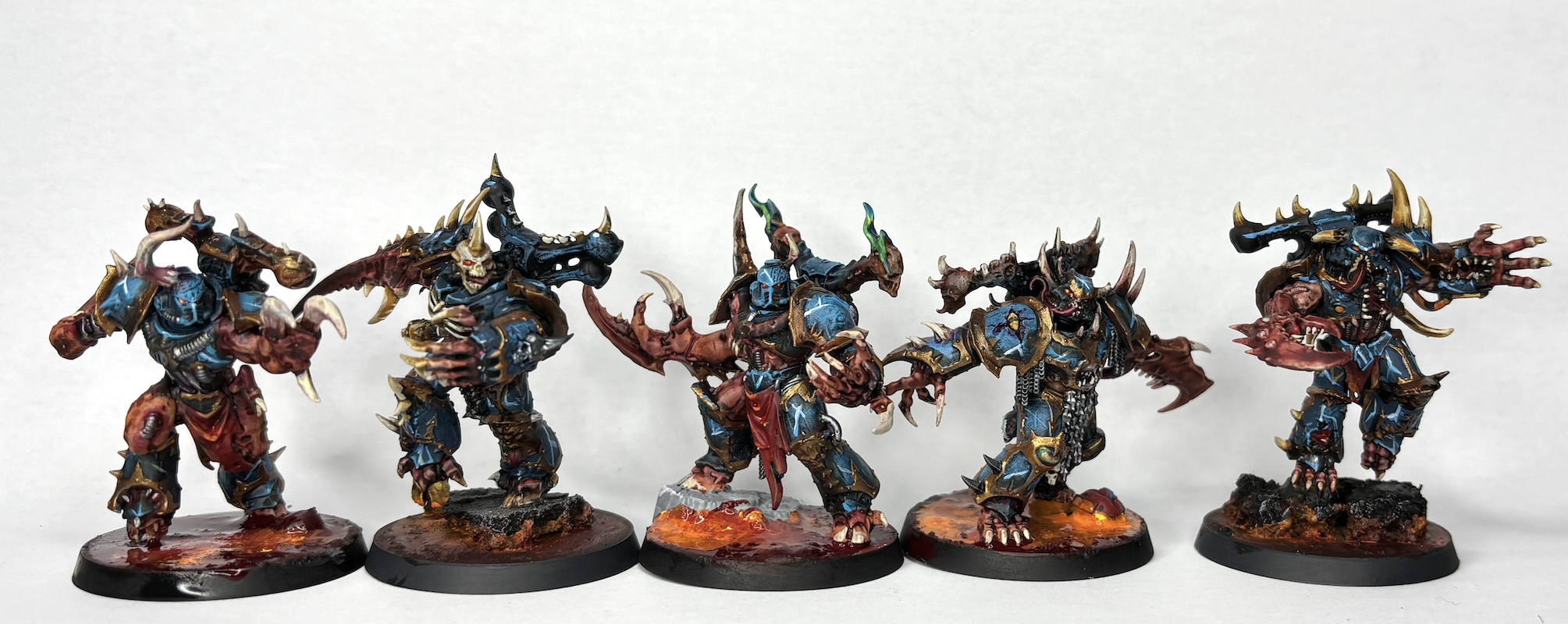
Q. Do Marks of Chaos do anything outside of a Pactbound Zealots Detachment?
Rob: No – and the Pactbound Zealots Detachment is the only time you’re asked to assign marks to each unit. Other than that, some units have Mark keywords – Abaddon comes with the CHAOS UNDIVIDED keyword, the Daemon Prince has to pick a mark, and units like Rubric Marines and Plague Marines come with TZEENTCH and NURGLE, respectively. This only has one application outside of Pactbound Zealots, and that’s to prevent a unit of Rubrics from doing maximum shots with the Let the Galaxy Burn Stratagem.
Jeremy: You have to choose a mark for Daemon Princes, those are what give them their bespoke upgrades. Other than that and what’s listed above, no real influence. Currently the wording in the Dataslate adds the Transport Restriction to the Marks of Chaos Rule, not the Slaves to Darkness Detachment, so as written it would appear that it applies to the Marks of Chaos rule in the Codex. It remains to be seen if that will stick around.
That wraps up our look at the biggest questions in the new Codex: Chaos Space Marines but as always if you have any questions or feedback, drop us a note in the comments below or email us at contact@goonhammer.com.
